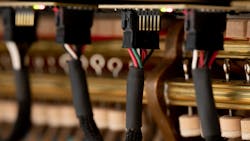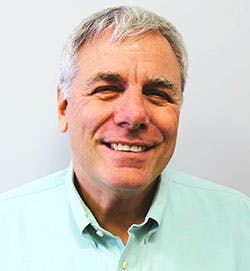What makes for successful product design? Among the most important elements is to have a clear definition of what success looks like. That means defining the product requirements, including features, functions, cost, volumes, and all of the elements that go into creating a product that will achieve market success.
Intelligent Product Solutions is a product design and development firm that has lots of experience in this area. I talked with President Mitch Maiman to get his insight in product-design trends, issues, and challenges.
What are the biggest trends in product design in the last five years?
We see a strong trend toward decentralized, geographically distributed teams (growing exponentially since the current COVID-19 pandemic). From a product perspective, smart connected devices along with the cloud-based infrastructure, data acquisition, aggregation, and analytics have been a huge trend that’s continuing today. From a technology perspective, there seems to have been a race toward more integrated SoC modules with wireless communications on board. This is helping make IoT device creation faster and less expensive to develop along with providing greater capability to allow for tradeoffs between cloud and edge-based computing.
What are the essential elements in successful product design?
Among the most important elements is to have a clear definition of what success looks like. That means defining the product requirements, such as features, functions, cost, volumes, and all elements that go into creating a product that will be successful in the market. It’s crucial that an objective market assessment has been performed in order to know, as best as possible, the problem being solved for the intended user and an understanding of the criteria that will lead a customer to buy. A successful product design only makes sense if the end product delivers on a business opportunity.
What are the most common product design mistakes?
In our role as a multi-functional, full-service product development professional services company working with dozens of clients each year, we get to see mistakes across a broad spectrum. Among the biggest issues are:
- Losing sight of the product requirements during development, such that the work goes off track or doesn’t meet deadlines, which is a common error. Likewise, overdesigning is an issue that results in increased cost, size, weight and schedule problems.
- Lack of appreciation for the cost and time it takes to create a successful product. Creating something well-designed, reliable, and successful looks easy. Experienced professionals know that it takes time, money, and expertise to deliver excellence.
- Inadequate reliability testing of a product before launching is another common mistake. An ounce of prevention is worth a pound of cure. The damage to your brand can be unrecoverable and the costs astronomical if a product with fundamental flaws gets into the marketplace.
What product design work are you most proud and why?
As a services company, we help our clients create dozens of new products each year. In particular, one product IPS helped create comes to mind as one of our most outstanding achievements. This is the Steinway Spiro | r piano (see figure). This smart, connected, player grand or baby grand piano is unmatched by any other product in the market. The quality goals were extremely stringent and hugely difficult to achieve. But, having helped create this, the result is a world-renowned musical instrument with unparalleled capability and performance.
What’s the best process for product design?
There is no one “right process.” We deploy different processes tailored to specific clients and projects. For larger clients, we usually conform with their processes. In the medical device space, we follow the process as defined by the client’s Quality Management System (QMS). With startups, early stage medical technology clients without a QMS, we help create a compliant phase-based (i.e. waterfall) process.
For projects without a client-specified process, we either use a waterfall process or, especially in the case of software, an agile development process. In some instances, we will employ a process that’s a hybrid between waterfall and agile. We tailor the process we choose to best match the complexity, regulatory needs, and risk profile of the client and project.
How have connected devices impacted product design?
Virtually every device we help create these days is smart and connected. We’re in the world of emerging ubiquitous IoT. This means that even simple mechanical products can be made smart with the addition of sensors, processing, and wireless communications. For most of our projects, we now need a multifunctional team that includes designers and mechanical, electrical, RF, embedded-systems, and application-level software engineers.
What are the latest tools used in product design?
To a large degree, the tools used by engineers and designers have existed for many years. However, those tools continue to evolve and improve with new functionality and added intelligence virtually every year. It’s key to keep your team equipped with the latest version but to keep in mind that for clients who have tools at various revision levels, it’s important for companies like ours to keep legacy variants alive to simplify data integration.
An exception is in software development. Here, tools are rapidly evolving and every year one or two new languages are essential to employ. Team collaboration tools have always been important. Now, with the increased need to have teams work remotely, development firms depend more on these digital tools than ever before. Such tools have come a long way even over the last five years in terms of quality and reliability.
Mitch Maiman is the President and Co-founder of Intelligent Product Solutions (IPS), a leading product design and development firm. He honed his deep knowledge of product design on the strength of a 30-year career with companies that manufacture commercially successful products for the consumer, industrial, and DoD markets. Prior to launching IPS, Mitch was Vice President of Engineering at Symbol Technologies.
About the Author
William G. Wong
Senior Content Director - Electronic Design and Microwaves & RF
I am Editor of Electronic Design focusing on embedded, software, and systems. As Senior Content Director, I also manage Microwaves & RF and I work with a great team of editors to provide engineers, programmers, developers and technical managers with interesting and useful articles and videos on a regular basis. Check out our free newsletters to see the latest content.
You can send press releases for new products for possible coverage on the website. I am also interested in receiving contributed articles for publishing on our website. Use our template and send to me along with a signed release form.
Check out my blog, AltEmbedded on Electronic Design, as well as his latest articles on this site that are listed below.
You can visit my social media via these links:
- AltEmbedded on Electronic Design
- Bill Wong on Facebook
- @AltEmbedded on Twitter
- Bill Wong on LinkedIn
I earned a Bachelor of Electrical Engineering at the Georgia Institute of Technology and a Masters in Computer Science from Rutgers University. I still do a bit of programming using everything from C and C++ to Rust and Ada/SPARK. I do a bit of PHP programming for Drupal websites. I have posted a few Drupal modules.
I still get a hand on software and electronic hardware. Some of this can be found on our Kit Close-Up video series. You can also see me on many of our TechXchange Talk videos. I am interested in a range of projects from robotics to artificial intelligence.



